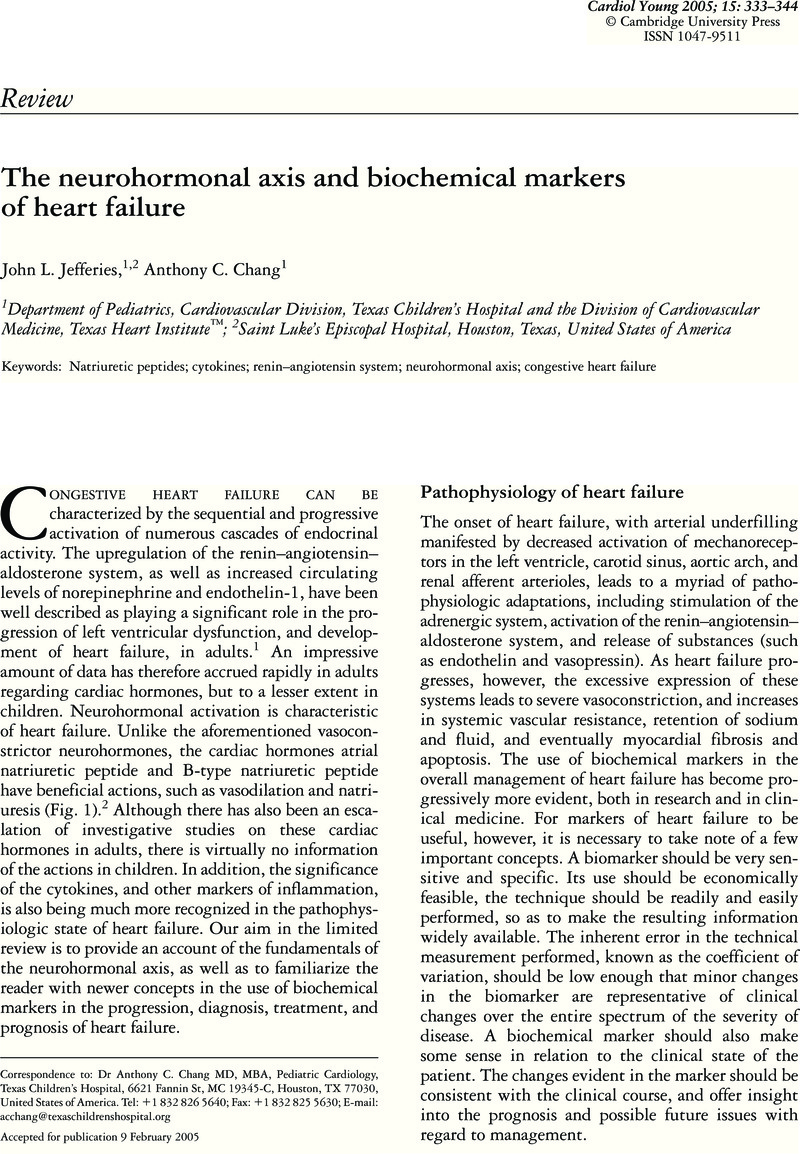Crossref Citations
This article has been cited by the following publications. This list is generated based on data provided by Crossref.
Koch, Andreas
Zink, Stefan
and
Singer, Helmut
2006.
B-type natriuretic peptide in paediatric patients with congenital heart disease.
European Heart Journal,
Vol. 27,
Issue. 7,
p.
861.
Tan, Lin-Hua
Jefferies, John L.
Liang, Jian-Feng
Denfield, Susan W.
Dreyer, William J.
Mott, Antonio R.
Grenier, Michelle A.
Dickerson, Heather A.
Price, Jack F.
Towbin, Jeffrey A.
Ou, Ching-Nan
and
Chang, Anthony C.
2007.
Concentrations of brain natriuretic peptide in the plasma predicts outcomes of treatment of children with decompensated heart failure admitted to the Intensive Care unit.
Cardiology in the Young,
Vol. 17,
Issue. 4,
p.
397.
Domico, Michele
Liao, Patricia
Anas, Nick
and
Mink, Richard B.
2008.
Elevation of brain natriuretic peptide levels in children with septic shock*.
Pediatric Critical Care Medicine,
Vol. 9,
Issue. 5,
p.
478.
Falkensammer, Christine B.
Heinle, Jeffrey S.
and
Chang, Anthony C.
2008.
Serial Plasma BNP Levels in Assessing Inadequate Left Ventricular Decompression on ECMO.
Pediatric Cardiology,
Vol. 29,
Issue. 4,
p.
808.
Sezgin Evim, Melike
Ucar, Birsen
Kilic, Zübeyir
and
Colak, Omer
2010.
The value of serum N-terminal pro-brain natriuretic peptide levels in the differential diagnosis and follow-up of congestive cardiac failure and respiratory distress due to pulmonary aetiologies in infants and children.
Cardiology in the Young,
Vol. 20,
Issue. 05,
p.
495.
Wald, Eric L.
Finer, Gal
McBride, Mary E.
Nguyen, Nguyenvu
Costello, John M.
and
Epting, Conrad L.
2016.
Fluid Management: Pharmacologic and Renal Replacement Therapies.
Pediatric Critical Care Medicine,
Vol. 17,
Issue. 8,
p.
S257.
Williams, Feifei Z.
Sachdeva, Ritu
Travers, Curtis D.
Walson, Karen H.
and
Hebbar, Kiran B.
2019.
Characterization of Myocardial Dysfunction in Fluid- and Catecholamine-Refractory Pediatric Septic Shock and Its Clinical Significance.
Journal of Intensive Care Medicine,
Vol. 34,
Issue. 1,
p.
17.



